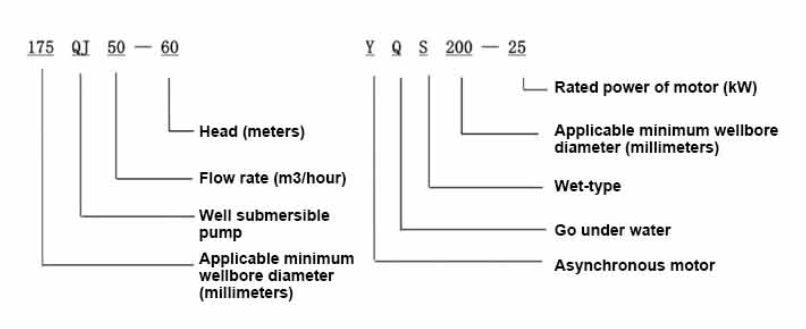Aug . 12, 2024 13:24 Back to list
A Comprehensive Guide to Successfully Installing a Submersible Deep Well Pump in Your Property
How to Install a Submersible Deep Well Pump
Installing a submersible deep well pump is a crucial task for anyone relying on groundwater for household or agricultural use. This type of pump is designed to operate underwater, efficiently lifting water from deep aquifers. The installation process may seem daunting, but with the right knowledge and tools, it can be accomplished successfully. Here’s a step-by-step guide to help you through the installation of a submersible deep well pump.
Step 1 Gather Tools and Equipment
Before starting the installation, it’s essential to gather all the necessary tools and equipment. You will need a submersible pump, a power source (typically a control box with a pressure switch), PVC or poly pipe for the discharge line, a pump cable, a junction box, and appropriate fittings. Additionally, tools such as wrenches, pliers, a tape measure, and a level will be required.
Step 2 Determine Well Depth
Knowing the depth of your well is crucial. Submersible pumps are designed with specific depths in mind, so verify the depth to ensure the pump you choose is suitable. Measure the distance from the surface to the water level, then determine the total depth from the surface to the bottom of the well.
Step 3 Prepare the Well Casing
Clear any debris from the well casing opening. If there are any obstructions or rust, make sure to clean it thoroughly to provide a smooth entry for the pump. You may also need to install a well seal to prevent contaminants from entering.
Step 4 Lower the Pump
Attach the pump to the discharge pipe. If your pump has a separate power cable, ensure it is securely connected and protected. Carefully lower the pump into the well using a rope or a winch. It’s essential to lower it straight to avoid any damage to the pump or well casing. Continue lowering until the pump reaches the desired depth, usually just above the intake screen to prevent sediment intake.
how to install a submersible deep well pump

Step 5 Connect the Pipe
Once the pump is in position, connect the discharge pipe to the pump's outlet. Use threaded fittings to ensure a watertight connection. It is advisable to use a union fitting, allowing for easier future maintenance or removal of the pump.
Step 6 Install the Control Box
The control box regulates the power supply to the pump. Mount it above ground, preferably in a sheltered location to protect it from the elements. Run appropriate electrical cable from the control box to the pump, ensuring to follow local electrical codes. Connect the pump wires to the control box according to the manufacturer’s instructions.
Step 7 Test the System
Once all connections are securely made, it’s time to test the system. Turn on the power to the control box and observe the pump's performance. Check for any leaks around the fittings and ensure water is flowing as expected. It's wise to monitor the first few runs to ensure everything is functioning correctly.
Step 8 Finalize Installation
Once testing is complete and everything is functioning properly, you can finalize the installation. Bury any exposed pipes below the frost line if applicable, and secure the control box to prevent unauthorized access.
Conclusion
Installing a submersible deep well pump can be a rewarding project that ensures a reliable water supply for your needs. By following these steps carefully, you can install the pump efficiently and effectively, ensuring it serves you well for years to come. If at any point you feel uncertain about the installation process, don't hesitate to seek advice from professionals or consult the pump manufacturer's installation guidelines. With the proper installation, your submersible pump will provide a continuous flow of water for drinking, irrigation, or other household needs.
-
Submersible Water Pump: The Efficient 'Power Pioneer' of the Underwater World
NewsJul.01,2025
-
Submersible Pond Pump: The Hidden Guardian of Water Landscape Ecology
NewsJul.01,2025
-
Stainless Well Pump: A Reliable and Durable Pumping Main Force
NewsJul.01,2025
-
Stainless Steel Submersible Pump: An Efficient and Versatile Tool for Underwater Operations
NewsJul.01,2025
-
Deep Well Submersible Pump: An Efficient 'Sucker' of Groundwater Sources
NewsJul.01,2025
-
Deep Water Well Pump: An Efficient 'Sucker' of Groundwater Sources
NewsJul.01,2025
-
 Submersible Water Pump: The Efficient 'Power Pioneer' of the Underwater WorldIn the field of hydraulic equipment, the Submersible Water Pump has become the core equipment for underwater operations and water resource transportation due to its unique design and excellent performance.Detail
Submersible Water Pump: The Efficient 'Power Pioneer' of the Underwater WorldIn the field of hydraulic equipment, the Submersible Water Pump has become the core equipment for underwater operations and water resource transportation due to its unique design and excellent performance.Detail -
 Submersible Pond Pump: The Hidden Guardian of Water Landscape EcologyIn courtyard landscapes, ecological ponds, and even small-scale water conservancy projects, there is a silent yet indispensable equipment - the Submersible Pond Pump.Detail
Submersible Pond Pump: The Hidden Guardian of Water Landscape EcologyIn courtyard landscapes, ecological ponds, and even small-scale water conservancy projects, there is a silent yet indispensable equipment - the Submersible Pond Pump.Detail -
 Stainless Well Pump: A Reliable and Durable Pumping Main ForceIn the field of water resource transportation, Stainless Well Pump has become the core equipment for various pumping scenarios with its excellent performance and reliable quality.Detail
Stainless Well Pump: A Reliable and Durable Pumping Main ForceIn the field of water resource transportation, Stainless Well Pump has become the core equipment for various pumping scenarios with its excellent performance and reliable quality.Detail
